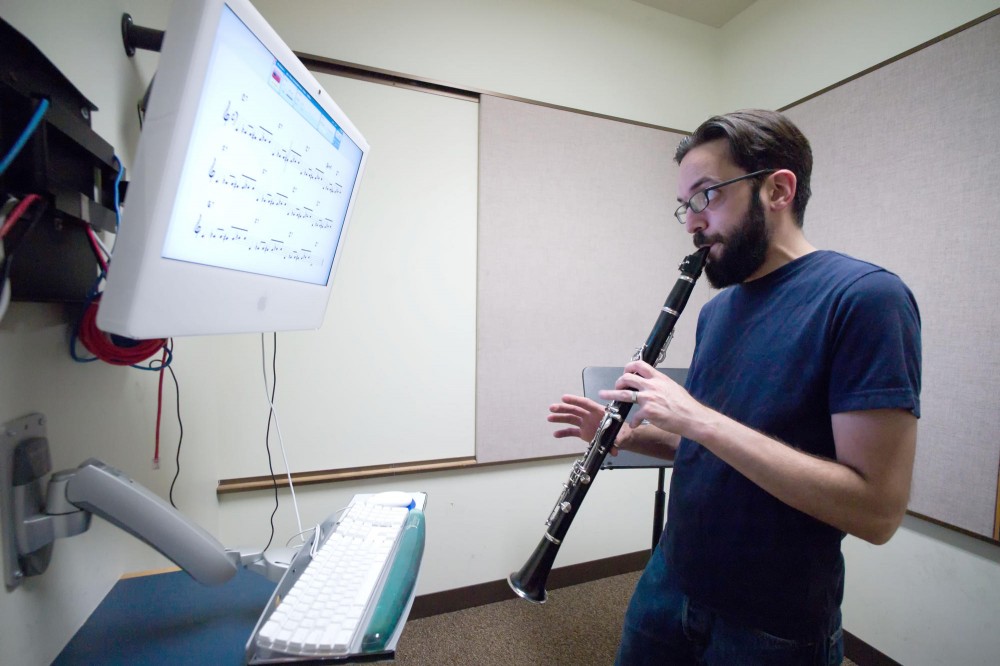A smart phone application that allows instructors to listen to studentsâÄô recorded performances and grade them automatically from anywhere may not be pitch perfect in practice.
The technology is headed to the University of Minnesota School of Music, where educators have both praise and misgivings for using it in classes. ItâÄôs the argument between economy and musicianship.
SmartMusic Inbox has been downloaded about 600 times âÄî even before the school year is in full swing, said Rick Hammond, a spokesman for MakeMusic, the appâÄôs Eden Prairie-based creator.
âÄúIâÄôm intrigued by it and curious to learn about it,âÄù said Laura Sindberg, an assistant professor in charge of instrumental music techniques courses at the music school.
Jean Del Santo, an associate professor of voice at the School of Music, said she couldnâÄôt imagine using a computerized analysis to grade her students, although it might be useful for beginners.
âÄúPitch and rhythm are very important, but it doesnâÄôt tell you anything about the phrasing, the interpretation or the dynamics âÄî loud and soft,âÄù she said of the app.
âÄúIt wouldnâÄôt be particularly musical.âÄù
The applicationâÄôs parent product, SmartMusic, has been in use for several years at the School of Music as an educational tool for those studying to be music teachers.
With the app, instructors can also send students music assignments from its digital song archive of more than 30,000 pieces.
Reminiscent of the video game Guitar Hero, it marks correct notes as green and wrong notes as red and is most helpful for musical beginners, usually middle or high school students.
Since one is required to learn the basics of how to play all woodwind and brass instruments to be a music teacher, SmartMusic can be helpful in music education classrooms at the university level as well.
Music software like SmartMusic is a tool in the development of the musician, but isnâÄôt the âÄúbe-all, end-all,âÄù Sindberg said.
âÄúIt does have the potential to dehumanize the musical experience,âÄù she said. âÄúThatâÄôs a conversation I enjoy having with my students âĦ they need to be able to think critically about what makes it useful and what might be some challenges.âÄù
Paul Budde, a University graduate and strong proponent of music practice software, used SmartMusic in a âÄúBrass techniques and teachingâÄù course he taught for three semesters at the School of Music âÄî the first-ever use of the software to teach teachers-in-training, according to Dan Massoth, MakeMusicâÄôs senior product manager for SmartMusic.
BuddeâÄôs students provided initial feedback that led to several software refinements, Massoth said. Since 2009, at least 70 other universities have started using SmartMusic in music education.
The software was useful, Budde said, because it motivates students to work toward a higher score on the rough patches of a piece where they made mistakes. It also might eliminate studentsâÄô performance jitters because they can play and submit work without needing to stand in front of others, he said.
According to Sindberg, SmartMusic will continue to be used in the fall and she and her colleagues will look into the Inbox app and its potential uses.
âÄúSmartMusic is one tool in the development of a musician,âÄù Sindberg said.
âÄúYou can have any type of tool and use it or abuse it.âÄù








